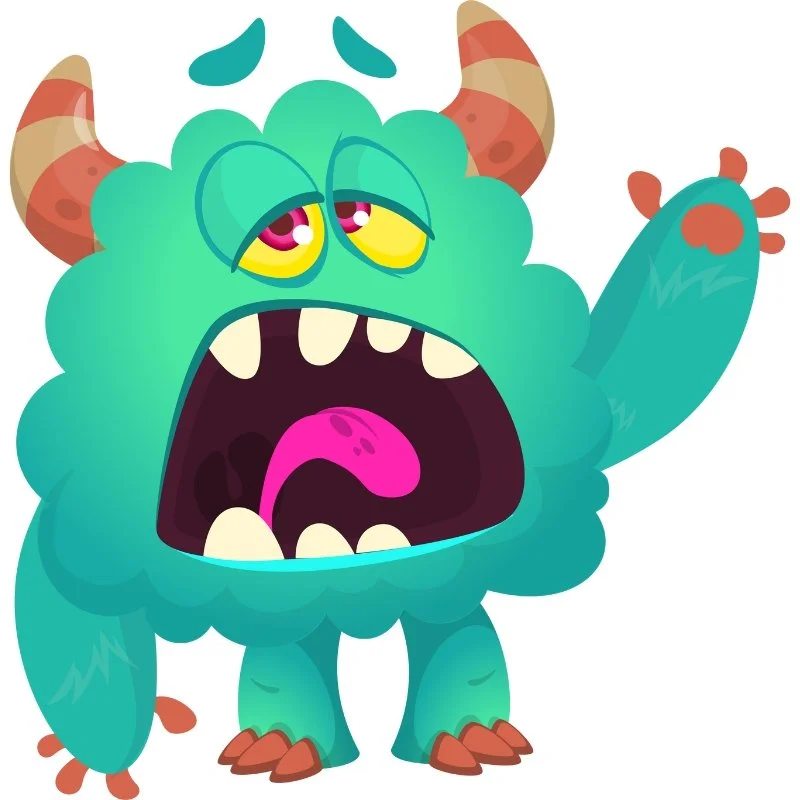Hush – The Shutdown and Stonewalling Monster
Hush is one of the Visiting Neuro Monsters. Hush represents the reflex to shut down, withdraw, or stonewall when emotions feel overwhelming or when conflict becomes too intense. Known as the Shutdown and Stonewalling Monster, Hush embodies the instinct to protect yourself by going silent, closing off, or creating walls that keep others out. Within the Neuro Monsters Universe, Hush reveals how silence can serve as a shield but can also block connection, resolution, and understanding.
The Symbolic Role of Hush
Hush symbolizes the quiet wall that rises when your nervous system cannot handle more stimulation. Its presence shows up when you suddenly go silent in a heated argument, when you disconnect emotionally in stressful moments, or when you retreat into stillness as a form of defense. Symbolically, Hush represents the protective silence that can be both necessary and harmful depending on how long it is held. By naming Hush you begin to see when silence is a pause for safety and when it becomes a barrier to communication and growth.
Hush often appears as a towering figure made of stone, with cracks across its surface where light tries to break through. This image reflects the paradox of silence: strong enough to protect yet heavy enough to isolate. Facing Hush with emotional neutrality allows you to recognize the difference between constructive stillness and destructive stonewalling.
Shutdown and Stonewalling in the Brain
In neuroscience terms Hush is tied to the dorsal vagal complex, the amygdala, and the prefrontal cortex. The dorsal vagal system initiates a freeze or shutdown response when threat feels too great to fight or flee. The amygdala signals overload, pushing the body to retreat into silence as a way of avoiding further pain. Meanwhile, the prefrontal cortex becomes offline, making it difficult to process, speak, or respond with clarity.
Hush symbolizes this shutdown loop where the nervous system conserves energy and avoids escalation, but at the cost of connection. The result is a pattern where silence replaces dialogue, reinforcing distance and unresolved tension.
The Protective Instinct Behind Hush
Although it can feel cold or rejecting, Hush’s instinct is protective. Silence and withdrawal are survival strategies meant to shield you from overwhelm. The nervous system uses shutdown to prevent further harm by reducing stimulation. The purpose is to give your system a temporary break from conflict or intensity. The challenge is that when Hush remains in control for too long, it blocks repair, communication, and intimacy. By seeing the protective purpose behind Hush you can learn to use silence as a pause rather than a wall.
Training with Hush
Training with Hush means learning how to turn protective silence into intentional pauses that support connection rather than fracture it. Cognitive Neuro Therapy emphasizes naming the shutdown neutrally and practicing small re-engagements after withdrawal.
When Hush appears you can practice the following steps. Pause and acknowledge the shutdown state without labeling it as failure. Name it as withdrawal rather than rejection. Give your body a safe way to regulate, such as stepping outside, drinking water, or focusing on breathing. Once grounded, return with a simple statement of presence such as “I need a moment” or “I am here and will come back to this.” These bridges prevent silence from becoming abandonment.
Over time Hush begins to soften not by being eliminated but by being trained. You learn that shutting down is a natural signal that you need space and calm. By treating Hush with compassion you can turn stonewalling into a short pause that protects without isolating. Hush becomes a reminder that silence has power but is most healing when followed by reconnection.


